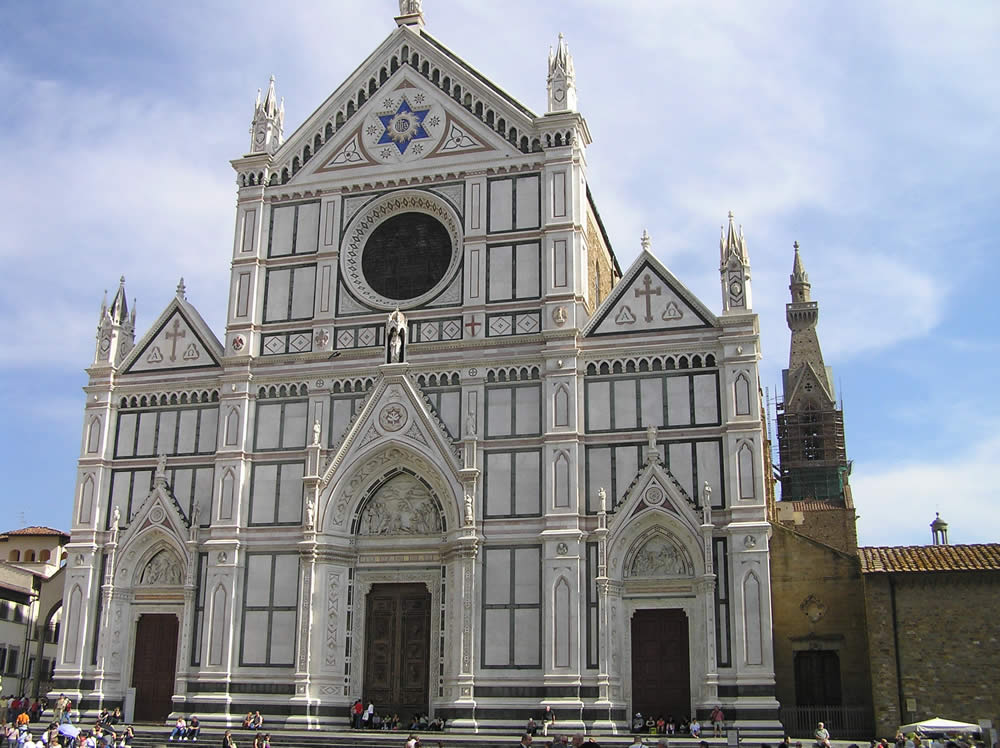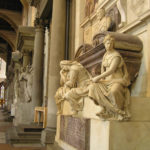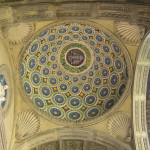Questo articolo è disponibile anche in:
![]() Français
Français ![]() Deutsch
Deutsch ![]() Español
Español ![]() Italiano
Italiano
The great square on which overlooks the Basilica of Santa Croce is surrounded by some buildings of historical interest such as the Palace dell’Antella (seventeenth century) – with beautiful frescoes by Giovanni da San Giovanni and Filippo Napoletano – and the Palazzo Cocchi Serristori (XVI century) by Baccio d’Agnolo.
Basilica of Santa Croce is the principal Franciscan church in Florence and is considered to be the most beautiful Italian Gothic church. The construction of the church was begun in 1295 by the architect Arnolfo di Cambio and was completed in 1442, the church has a Egyptian cross plan and wooden trusses roof.
Inside the church, spacious and airy, has three aisles, the nave is 19 meters wide and has a wooden ceiling. The facade of the Basilica was added in the nineteenth century and is decorated with marbles of different colors arranged to compose geometric designs with with beautiful effects.
The neo-Gothic facade of Santa Croce, in marble, was executed in the nineteenth century and designed by Nicola Matas (1853-1863), and is decorated with marbles of different colors arranged to compose geometric designs with a very nice effect. Also in the nineteenth century was built the bell tower, designed by Gaetano Baccani (1847).
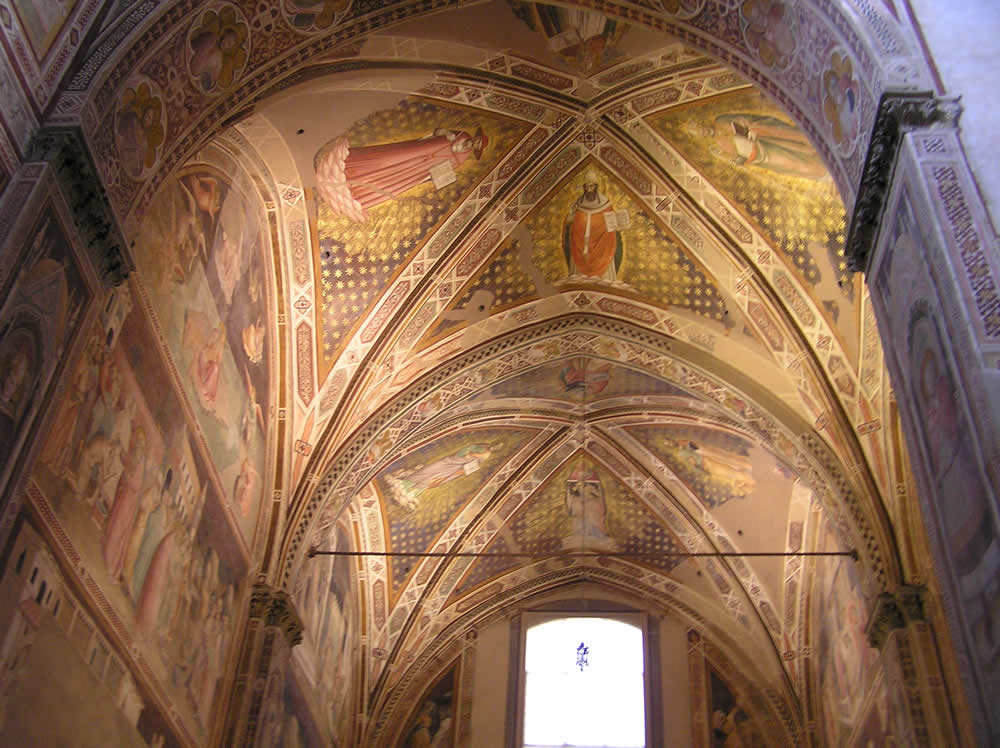
THE TOMBS OF THE GREAT MEN OF ITALY
The Basilica is also famous because it houses numerous tombs of famous men, indeed along its walls are tombs and funerary monuments, while on the floor there are 276 gravestones.
Among the graves are those of Galileo Galilei (his tomb was built by Giovanni Battista Foggini in 1737), Michelangelo Buonarroti (his tomb was designed by Vasari), Niccolo Machiavelli, Vittorio Alfieri (his tomb is the work of Canova), Gioachino Rossini, Ugo Foscolo, Leon Battista Alberti, Leonardo Bruni (his grave (1444) is the work of Bernardo Rossellino), Carlo Marsuppini (his tomb was carved around 1455 by Desiderio da Settignano), Vittorio Fossombroni. In the basilica is als othe cenotaph of Dante Alighieri (1829).
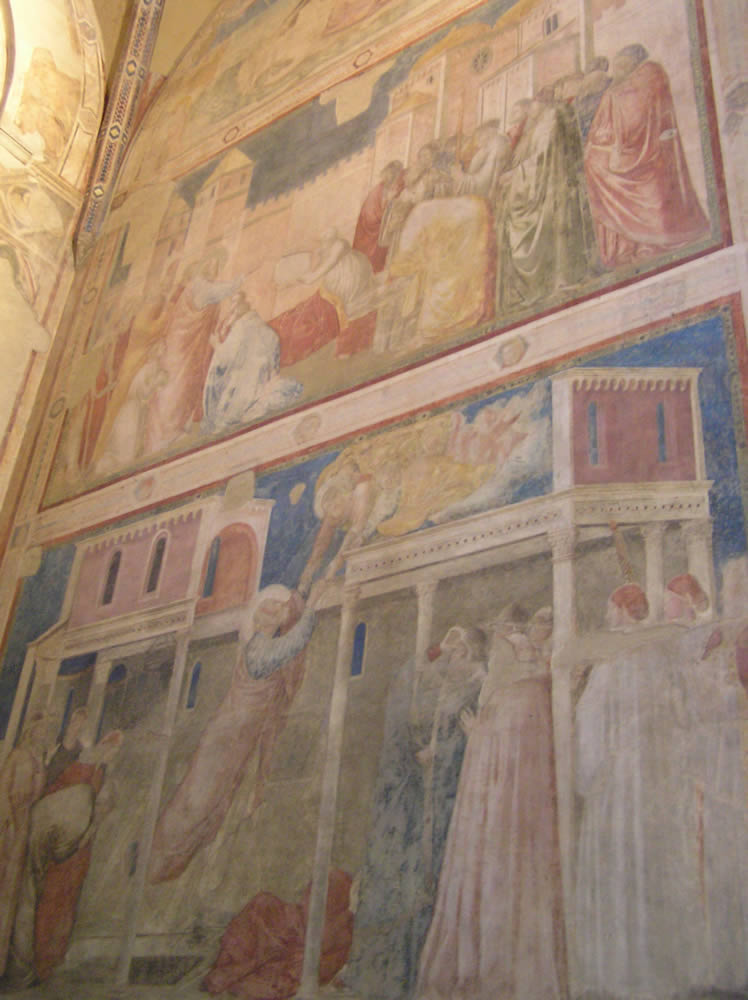
A GREAT RICHNESS OF ART MASTERPIECES
Besides the tombs, Santa Croce is full of remarkable works of art, there are works by Donatello (wooden crucifix in the Bardi of Vernio Chapel, the relief of the Annunciation (1435) sandstone commissioned by Cavalcanti in the right aisle), Benedetto da Majano (marble pulpit of the XV century), Giotto (his frescoes are in the Bardi and Peruzzi chapels (1320-1325)), Taddeo Gaddi, Bernardo Daddi, Maso di Banco (which frescoed the chapels Baroncelli, Pulci-Berardi and Bardi di Vernio).
In the Novitiate Chapel, built in 1445 by Michelozzo, is an altarpiece depicting the Madonna and Child with Saints by Andrea della Robbia (1495). Worked to the decorations of Santa Croce also: Andrea Orcagna, Giovanni da Milano, Niccolò di Pietro Gerini and Agnolo Gaddi (main chapel of the Alberti), and even modern artists such as Libero Andreotti, Antonio Berti, Pietro Parigi.
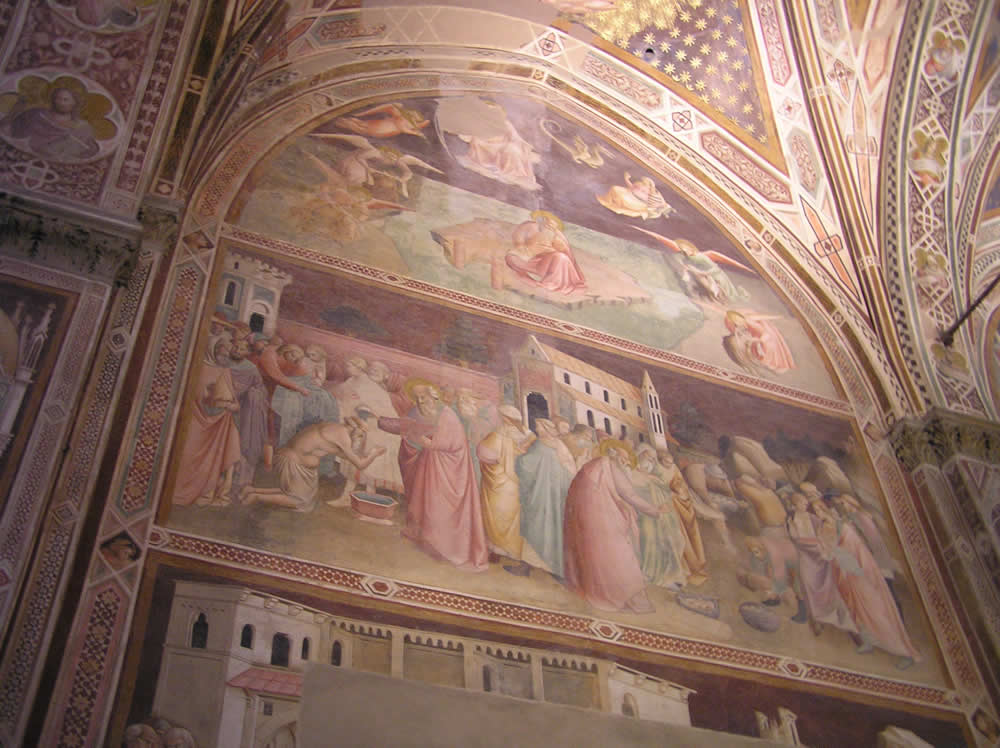
Of great interest is the visit to the cloisters. In particular the large cloister (XIV century) and the chapel de’ Pazzi (Cappella de’ Pazzi). The various chapels are decorated with works of art by Giotto and della Robbia, while Brunelleschi designed the cloisters.
In the cloister next to the church is the Chapel de’ Pazzi, by Filippo Brunelleschi, one of the masterpieces of the Renaissance. Started by Brunelleschi in 1429 and completed after his death is decorated with terracotta decorations glass by Desiderio da Settignano and Luca della Robbia.
The Museo dell’Opera di Santa Croce houses a crucifix by Cimabue, now partially restored after being damaged in the 1966 flood.
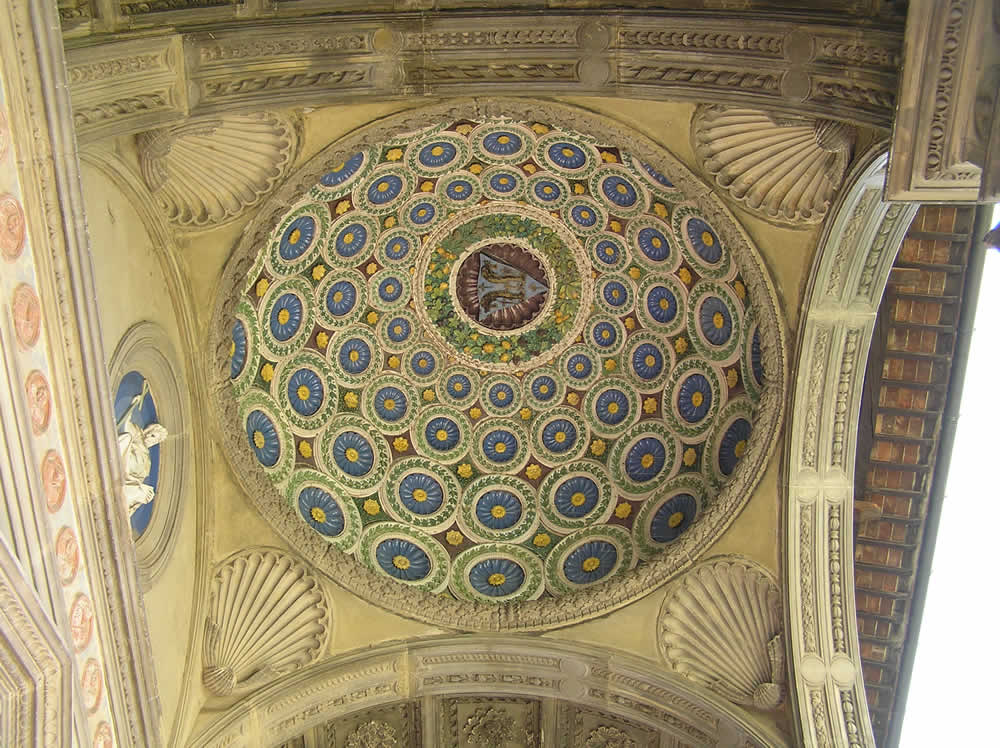
SANTA CROCE MUSEUM, BASILICA OF SANTA CROCE
The museum is housed in the fourteenth and fifteenth century premises (yards, cloister, refectory) of the convent of Santa Croce.
The visit of the basilica with his works of art is part of the tour, in the Museum of Opera are exhibited works of art from the church and convent of Santa Croce and the demolition of the historic center of Florence.
In Santa Croce everything is represented at the highest level: the frescoes, who worked Giotto, Maso di Banco, Taddeo Gaddi, Giovanni da Milano, Agnolo Gaddi; the monumental crosses and polyptychs, the wonderful stained glass windows from fourteenth century.
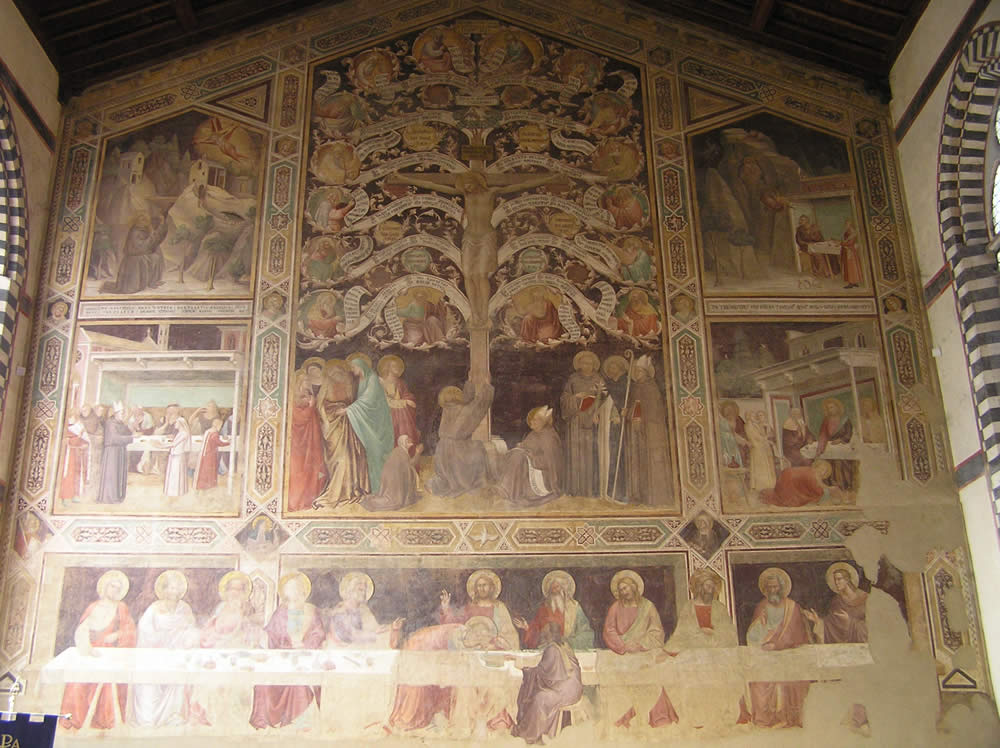
Questo articolo è disponibile anche in:
![]() Français
Français ![]() Deutsch
Deutsch ![]() Español
Español ![]() Italiano
Italiano

